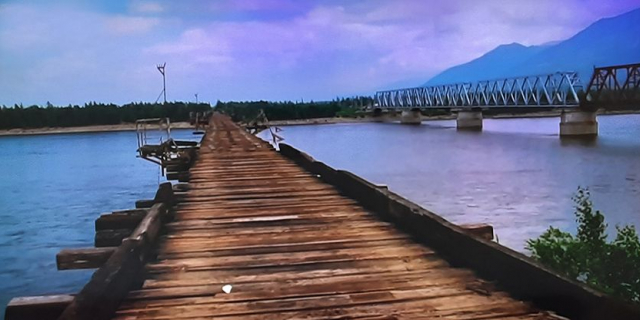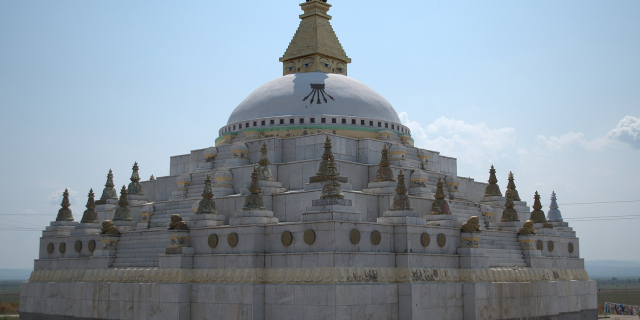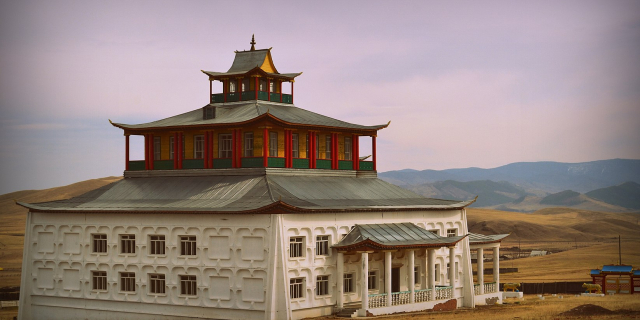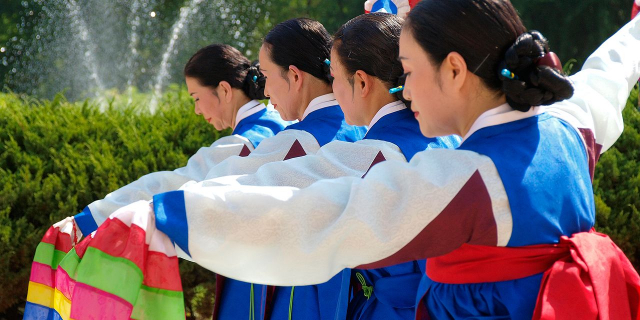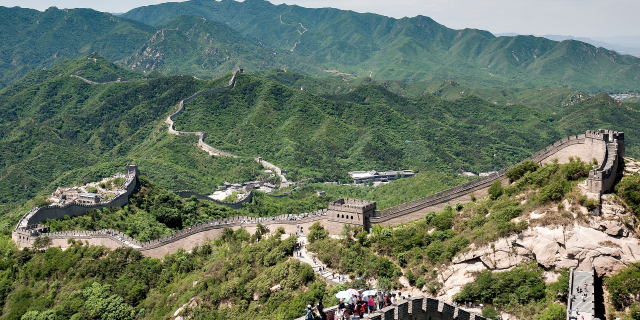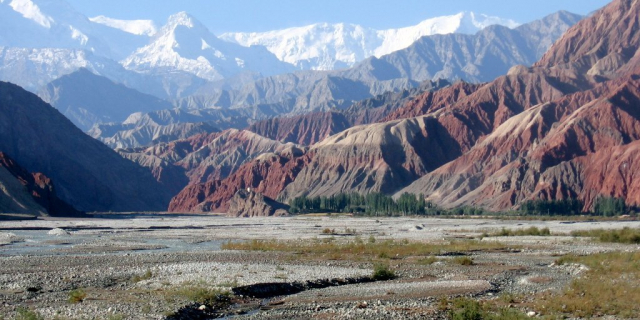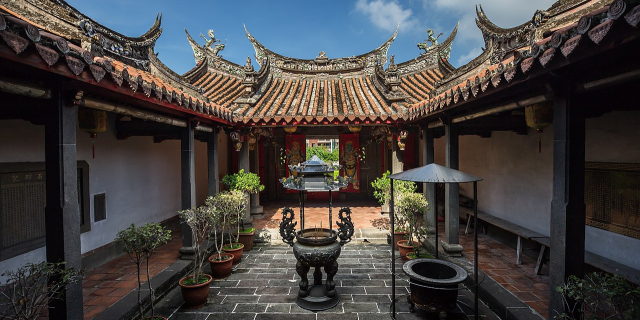Buryatia
Context of Buryatia
Buryatia (Russian: Бурятия; Buryat: Буряад Улас), officially the Republic of Buryatia, is a republic of Russia located in the Russian Far East. Formerly part of the Siberian Federal District, it has been administered as part of the Far Eastern Federal District since 2018. It borders Irkutsk Oblast and Lake Baikal, the deepest lake in the world to the north, Zabaykalsky Krai to the east, Tuva to the west and Mongolia to the south. Its capital is the city of Ulan-Ude. It has an area of 351,300 square kilometers (135,600 sq mi) with a population of 978,588 (2021 Census). It is home to the indigenous Buryats.
More about Buryatia
- Population 985431
- Area 351300
 Unusual blue diopsidite skarn from the Dovyren Highlands, Buryatia.
Unusual blue diopsidite skarn from the Dovyren Highlands, Buryatia.Mongolian people have lived around the area of Lake Baikal since the fifth century, with Mongolic-related Slab Grave cultural monuments found in Baikal territory.[1][2] Over time, the Mongolic peoples of the regions developed into distinct groups, one of which became the Buryats. Further divisions of the Buryats came from those living on the western shore of Lake Baikal, with better land for agriculture, and those in the east, who practiced nomadism more regularly and continued residing in moveable felt yurts. As a result of the superior farmland, the western side of Lake Baikal was settled by European peasants during the time of the Russian Empire – western Buryats were more exposed to and influenced by the culture, religions, and economy of their European neighbors, whereas the eastern Buryats maintained closer ties to other Mongolic peoples, Buddhism, and Asian civilizations.[1]
...Read moreRead less Unusual blue diopsidite skarn from the Dovyren Highlands, Buryatia.
Unusual blue diopsidite skarn from the Dovyren Highlands, Buryatia.Mongolian people have lived around the area of Lake Baikal since the fifth century, with Mongolic-related Slab Grave cultural monuments found in Baikal territory.[1][2] Over time, the Mongolic peoples of the regions developed into distinct groups, one of which became the Buryats. Further divisions of the Buryats came from those living on the western shore of Lake Baikal, with better land for agriculture, and those in the east, who practiced nomadism more regularly and continued residing in moveable felt yurts. As a result of the superior farmland, the western side of Lake Baikal was settled by European peasants during the time of the Russian Empire – western Buryats were more exposed to and influenced by the culture, religions, and economy of their European neighbors, whereas the eastern Buryats maintained closer ties to other Mongolic peoples, Buddhism, and Asian civilizations.[1]
The territory of Buryatia has been governed by the Xiongnu Empire (209 BC-93 CE) and Mongolian Xianbei state (93–234), Rouran Khaganate (330–555), First Turkic Khaganate (552-603), Eastern Turkic Khaganate (682-744), Tang dynasty (647–784), Uyghur Khaganate (744-840), Yenisei Kyrgyz Khaganate (840-1208), Mongol Empire (1206–1368), and Northern Yuan (1368–1635).[3] Medieval Mongol tribes such as the Merkit, Bayads, Barga Mongols and Tümeds inhabited in Buryatia.[3]
Imperial RussiaCossacks and other tsarists officials began moving eastward into the western Buryat lands in 1625, where they estimated 30,000 Buryats were living in southeastern Siberia, collecting tribute from other, small Siberian tribes.[1] The Buryats resisted the incorporation into the Russian Empire's tribute system (yasak) that demanded a yearly supply of furs; it was not until the 1680s that the last of the eastern Buryat lands were forced to participate in the yasak system. In 1666, the fort of Udinskoye was founded. This area later became known as Verkhneudinsk – in 1934, it was renamed Ulan-Ude, the present-day capital of Buryatia.[4]
From 1727 it was the border crossing for the Kyakhta trade between Russia and China.[5] Kyakhta's founder, the Serb Sava Vladislavich, established it as a trading point between Russia and the Qing Empire.[6] The 1820 reforms of Mikhail Speransky established indirect rule over Buryatia by codifying the local clan leaders as official members of the "steppe duma" in order to incorporate them into the existing imperial government.[4]
Buddhism was recognized as an official religion of the Russian Empire by Empress Elizabeth in 1741, with the first Pandito Khambo Lama, the spiritual leader of Buryat Buddhists, elected in 1764. The first person to serve in this role was Damba Dorzha Zaiaev (1711–1776). At the time of the Bolshevik Revolution, Dashi-Dorzho Itigilov served as the 12th Pandito Khambo Lama of Eastern Siberia from 1911 to 1917.[4] Itigilov stepped down in 1917 at the time of the revolution and later encouraged his students to flee to Mongolia, though he refused to flee himself.
Soviet BuryatiaNational movements, including that of Buryatia, began to foment after the February Revolution in 1917. From March 1917, the leading Buryat intelligentsia organized a number of conferences in cities such as Petrograd, Chita, Irkutsk, and Verkhneudinsk (present-day Ulan-Ude) and invited representatives from Buryat administrative districts of the Irkutsk and Transbaikalia regions. The culmination of these conferences was the first All-Buryat Congress in April 23–25, 1917 in Chita, where activists advocated for a self-governing Buryat Autonomous Region, based on the models of Poland and Finland, with an elected body, the Buryat National Duma, that all Buryats, men and women, over the age of 18 and without criminal convictions, would participate in. This Duma would elect a permanent executive body, the Buryat National committee, which would take on responsibilities such as organizing the elections, assembling the Buryat Duma, and publishing works in the Buryat language.[7] Among other topics discussed at the Congress were the establishment of an Education Council to create Buryat schools, trained educators, and curricula that included the history of the Buryats and Mongols and Buryat studies.
After the November Revolution in 1917, the Buryats bid for independence was complicated by the arrival of a Japanese expeditionary force into Buryatia in 1918.[7] The Buryat national leaders saw the Japanese as potential and critical allies in assisting the independence movement, but the cooperation ultimately failed due to the conflicting agendas. The Red Army advanced in Buryatia in 1920 and continued to Outer Mongolia in 1921. Attracted to the promises of self-determination and territorial autonomy by the Bolsheviks, and having lost the cooperation of the Japanese, the Buryat leaders embraced the idea of building a Buryat nation with the new Soviet state. In 1923, the Buryat Autonomous Soviet Socialist Republic (Buryat: Буряадай Автономито Совет Социалис Республика; Russian: Бурятская Автономная Советская Социалистическая Республика) was created as a result of the merger of State of Buryat and Buryat Oblast and promised territorial autonomy. In 1929, a revolt was suppressed in Buryatia, caused by collectivisation and repression of Buddhism. In 1937, Aga Buryatia and Ust-Orda Buryatia were detached from the Buryat-Mongolian ASSR and merged with Chita and Irkutsk Oblasts, respectively. In 1958, the name "Mongol" was removed from the name of the republic as it was fitting and simply became the Autonomous Soviet Socialist Republic of Buryatia within the vast multi-ethnic, diverse Soviet Union.
The Ivolginsky Datsan was opened in 1945 as the only Buddhist spiritual centre of the USSR, home to the Central Spiritual Board of Buddhists of the USSR, the state-controlled sangha.
The Buryat intelligentsia were active throughout Buryatia and beyond, into Tibet and Mongolia. At the turn of the 20th century, Buryats leaders, such as Batu-dalai Ochirov and Mikhail Bogdanov, began actively writing political articles about the threat to Buryatia and Buryat existence from Russia. Despite their noted influence from 1900 to 1930, most of them were purged, killed outright or sent to concentration camps, in the 1930s.[8]
The leader of the Buryat ASSR from 1962 to 1984 was Andrei Urupkheevich Modogoev.[9] In the 1970s, Soviet authorities began two major industrial projects in Buryatia: the Gusinoozerskii power station to the south of Ulan-Ude and the construction of the Baikal–Amur Mainline railway in northern Buraytia. The construction of both projects, particularly the railway, required recruiting campaigns to bring workers from other parts of the country to Buryatia. Towns developed along the railroad, and the urban population in northern Buryatia doubled between 1979 and 1989.[1] In addition to the Russians who moved to Buryatia for work, Buryats from other parts of southern Siberia also migrated to the Buryat ASSR, particularly Ulan-Ude and other cities for jobs and educational opportunities. Prior to World War II, less than 10% of Buryats lived in urban areas, compared to almost half at the time of the fall of the Soviet Union. By 1989, one-third of the Buryat population of the Buryat ASSR was living in Ulan-Ude.
Post-Soviet BuryatiaThe Buryat ASSR declared its sovereignty in 1990 and adopted the name Republic of Buryatia in 1992. However, it remained an autonomous republic within the Russian Federation. On 11 July 1995 Buryatia signed a power-sharing agreement with the federal government, granting it autonomy.[10] This agreement was abolished on 15 February 2002.[11]
Following the dissolution of the Soviet Union, autonomous republics such as Buryatia did not have the right to secede. However they retained considerable autonomy, with a separate legislature and president. However this autonomy has been curtailed following the 2004 law passed by Vladimir Putin that decreed regional governors and presidents were to be appointed, rather than directly elected.[4]
^ a b c d Chakars, Melissa (2014). The socialist way of life in Siberia : transformation in Buryatia. Budapest: Central European University Press. ISBN 978-963-386-014-4. OCLC 878406217. ^ History of Mongolia, Volume I, 2003 ^ a b History of Mongolia, Volume II, 2003 ^ a b c d Quijada, Justine B. (2019). Buddhists, shamans, and Soviets : rituals of history in post-Soviet Buryatia. New York, NY: Oxford University Press. ISBN 978-0-19-091680-0. OCLC 1045640510. ^ Chisholm, Hugh, ed. (1911). . Encyclopædia Britannica. Vol. 15 (11th ed.). Cambridge University Press. p. 782. ^ Mark Mancall (1971). Russia and China: their diplomatic relations to 1728, (Volume 61 of Harvard East Asian series, Center for East Asian Studies, Harvard University). Harvard University Press. p. 263. ISBN 9780674781153. ^ a b Toshihiro Minohara; Evan N. Dawley (2021). Beyond Versailles : the 1919 moment and a new order in East Asia. Lanham, Maryland: Lexington Books. pp. 81–98. ISBN 978-1-4985-5446-6. OCLC 1222777577. ^ Rupen, Robert A. (1956). "The Buriat Intelligentsia". The Far Eastern Quarterly. 15 (3): 383–398. doi:10.2307/2941876. ISSN 0363-6917. JSTOR 2941876. ^ Chakars, Melissa (2009-01-01). "Buryat Literature as a Political and Cultural Institution from the 1950s to the 1970s". Inner Asia. 11 (1): 47–63. doi:10.1163/000000009793066569. ISSN 2210-5018. ^ Solnick, Steven (29 May 1996). "Asymmetries in Russian Federation Bargaining" (PDF). The National Council for Soviet and East European Research: 12. Archived from the original (PDF) on 28 August 2017. Retrieved 6 May 2019. ^ Chuman, Mizuki. "The Rise and Fall of Power-Sharing Treaties Between Center and Regions in Post-Soviet Russia" (PDF). Demokratizatsiya: 146. Archived from the original (PDF) on 2019-03-08. Retrieved 2019-05-06.






